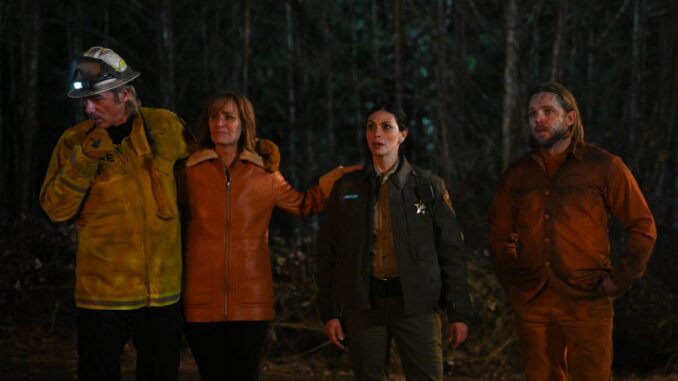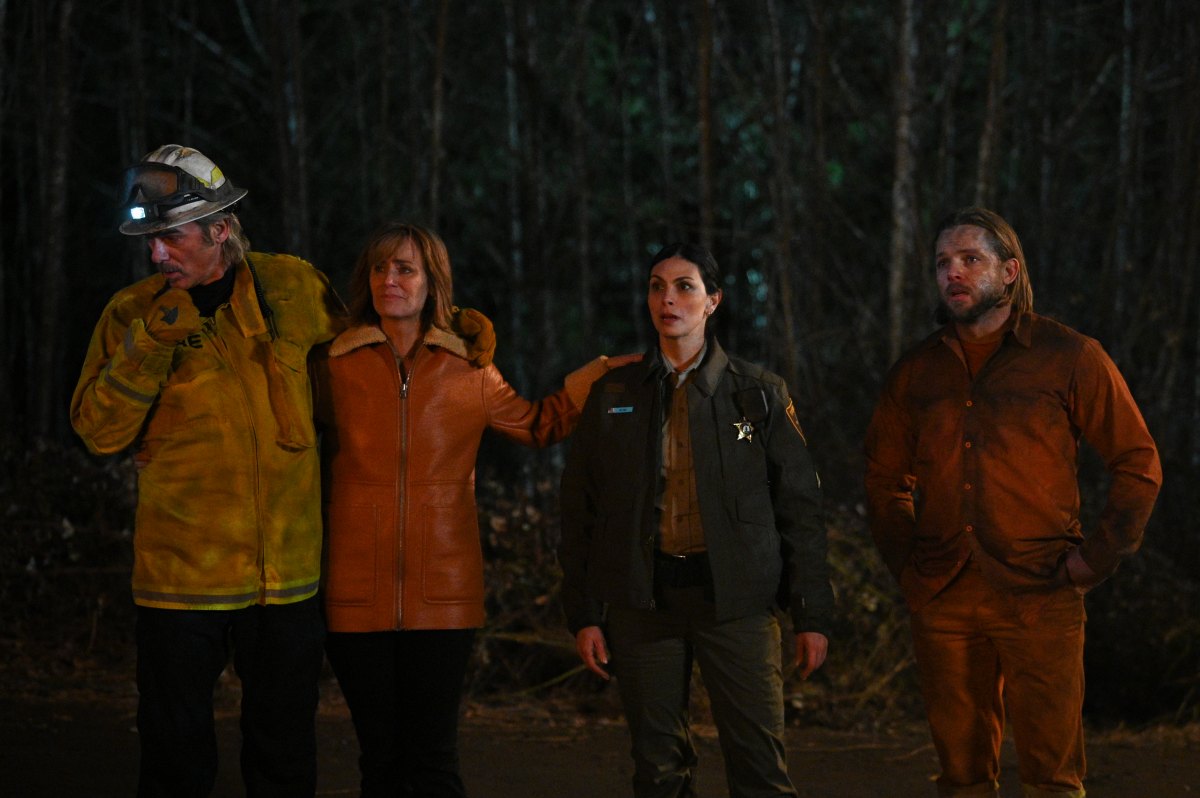
The Ember and the Badge: Every Character’s Link in the Fire-Scorched, Law-Bound Landscape
The rugged, sun-baked landscape of Northern California, often bathed in the amber glow of wildfire or the stark flash of a patrol car’s siren, is more than just a setting for its inhabitants; it is a crucible. In this imagined universe where the lines blur between the dramatic narratives we call “Fire Country” and “Sheriff Country” (perhaps designated “md11” as a shared narrative identifier), every character, from the lead protagonists to the quietest background figure, is bound by invisible threads of smoke, ash, and the unwavering pursuit of justice and survival. Their lives are not merely adjacent but deeply interwoven, a tapestry woven from wildfire smoke and police tape, shared grief and collective resilience.
At the most fundamental level, the link between every character lies in the shared geography and the inherent challenges it presents. Whether it’s the towering pines of the national forest or the dusty main street of a small town like Edgewater, the land itself is a central character, dictating the rhythm of life and death. The fire chief, Vince Leone, battling a roaring inferno with his crew, knows that the same dense brush and winding roads that feed the flames are the very obstacles a sheriff’s deputy, perhaps Sheriff Dobbs, navigates while pursuing a suspect or responding to a domestic disturbance. A sudden change in wind during a wildfire can send embers raining down on a remote cabin, simultaneously creating a search-and-rescue mission for the firefighters and a potential looting scenario for the sheriff’s department. Every resident, from the local diner owner to the gruff logger, understands this dual threat; their homes, livelihoods, and very safety are perpetually held hostage by both nature’s fury and human fallibility. The local store clerk who sells snacks to a weary fire crew might later call the sheriff about a break-in during an evacuation, their personal safety a shared concern across both narrative arcs.
Beyond the immediate environmental link, there’s the interdependence of services and the community fabric. In these tight-knit rural areas, emergencies rarely respect jurisdictional boundaries. A massive wildfire isn’t just a firefighting problem; it’s a public safety crisis. Sheriff’s deputies are crucial for managing evacuations, securing fire lines, investigating arson, and maintaining order amidst chaos. Conversely, a crime scene deep in the wilderness might require the specialized equipment or local knowledge of the Cal Fire crews. Consider the ex-con firefighter Bode Donovan. His past, an open wound, directly impacts the sheriff’s interest in his activities, making him a person of interest or a potential source of information. His efforts at redemption, celebrated by his fire crew, might still be eyed with suspicion by a local deputy who remembers his rap sheet. The local paramedics, shopkeepers, and even the eccentric hermits living off-grid are known to both the sheriff’s department (as potential witnesses or persons in need) and the fire department (as individuals to protect or assist during emergencies). A victim of a fire might be the relative of a deputy; a criminal apprehended by the sheriff might have lost everything in a blaze. These aren’t just professional overlaps; they’re deeply personal connections woven into the social fabric.
Furthermore, every character is linked by shared themes of justice, redemption, and the raw human spirit of survival. Both “Fire Country” and “Sheriff Country” explore the thin line between order and chaos, the choices made under extreme duress, and the sacrifices demanded by duty. Bode, seeking a second chance amidst the inferno, mirrors the journey of a sheriff’s deputy who might be fighting their own internal demons while upholding the law. The stoic veteran firefighter, weathered by countless seasons, understands the grim determination in the eyes of a seasoned sheriff’s detective working a particularly brutal case. The families of these first responders, from Sharon Leone worrying about her son and husband on the fire line to the anxious spouse of a deputy on a dangerous patrol, share a common burden of fear and pride. They are all witnesses to the unique grit of rural life, where self-reliance is prized, but community support is the ultimate lifeline.
In essence, “Every Sheriff Country Character’s Link to Fire Country Explained md11” is not about a literal character-by-character crossover, but about the profound, undeniable truth that in such a specific, high-stakes environment, no one exists in a vacuum. The smoke from a raging wildfire carries the scent of danger for the firefighter, but also the potential for crime to the law enforcement officer, and fear to every man, woman, and child living in its shadow. The swift hand of justice, wielded by the sheriff, often has to navigate paths cleared by the relentless efforts of the fire crew, and vice versa. Each person, regardless of their role – whether they wear a badge, a turnout coat, or simply live their life in this wild, beautiful, and dangerous land – is a thread in the same tightly woven, constantly challenged tapestry. Their stories are not separate but echoing narratives of the human spirit confronting the dual forces of nature’s power and humanity’s complex heart, all under the vast, unpredictable sky of a single, shared country.

